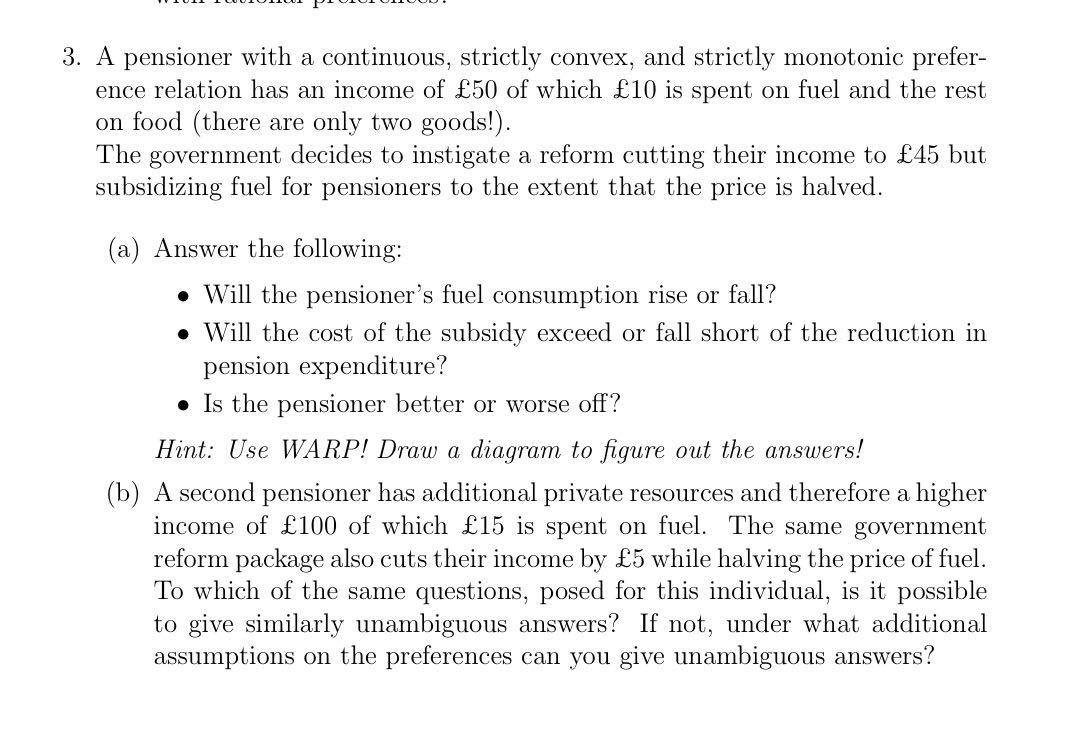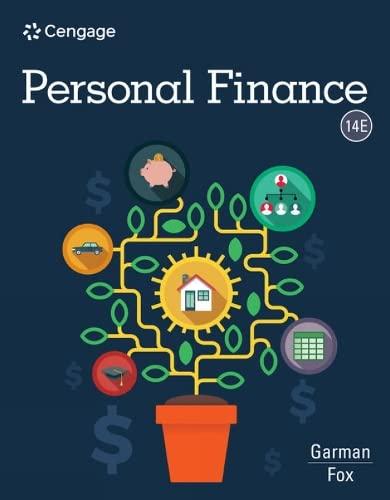
3. A pensioner with a continuous, strictly convex, and strictly monotonic preference relation has an income of 50 of which 10 is spent on fuel and the rest on food (there are only two goods!). The government decides to instigate a reform cutting their income to 45 but subsidizing fuel for pensioners to the extent that the price is halved. (a) Answer the following: - Will the pensioner's fuel consumption rise or fall? - Will the cost of the subsidy exceed or fall short of the reduction in pension expenditure? - Is the pensioner better or worse off? Hint: Use WARP! Draw a diagram to figure out the answers! (b) A second pensioner has additional private resources and therefore a higher income of 100 of which 15 is spent on fuel. The same government reform package also cuts their income by 5 while halving the price of fuel. To which of the same questions, posed for this individual, is it possible to give similarly unambiguous answers? If not, under what additional assumptions on the preferences can you give unambiguous answers? 3. A pensioner with a continuous, strictly convex, and strictly monotonic preference relation has an income of 50 of which 10 is spent on fuel and the rest on food (there are only two goods!). The government decides to instigate a reform cutting their income to 45 but subsidizing fuel for pensioners to the extent that the price is halved. (a) Answer the following: - Will the pensioner's fuel consumption rise or fall? - Will the cost of the subsidy exceed or fall short of the reduction in pension expenditure? - Is the pensioner better or worse off? Hint: Use WARP! Draw a diagram to figure out the answers! (b) A second pensioner has additional private resources and therefore a higher income of 100 of which 15 is spent on fuel. The same government reform package also cuts their income by 5 while halving the price of fuel. To which of the same questions, posed for this individual, is it possible to give similarly unambiguous answers? If not, under what additional assumptions on the preferences can you give unambiguous answers







